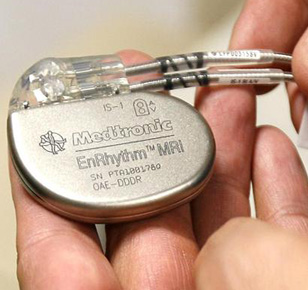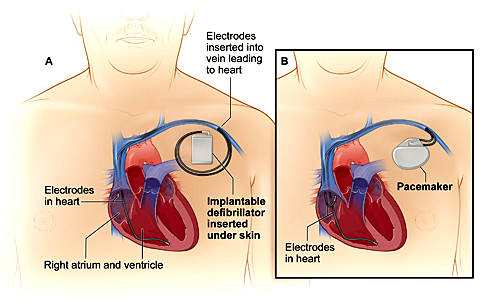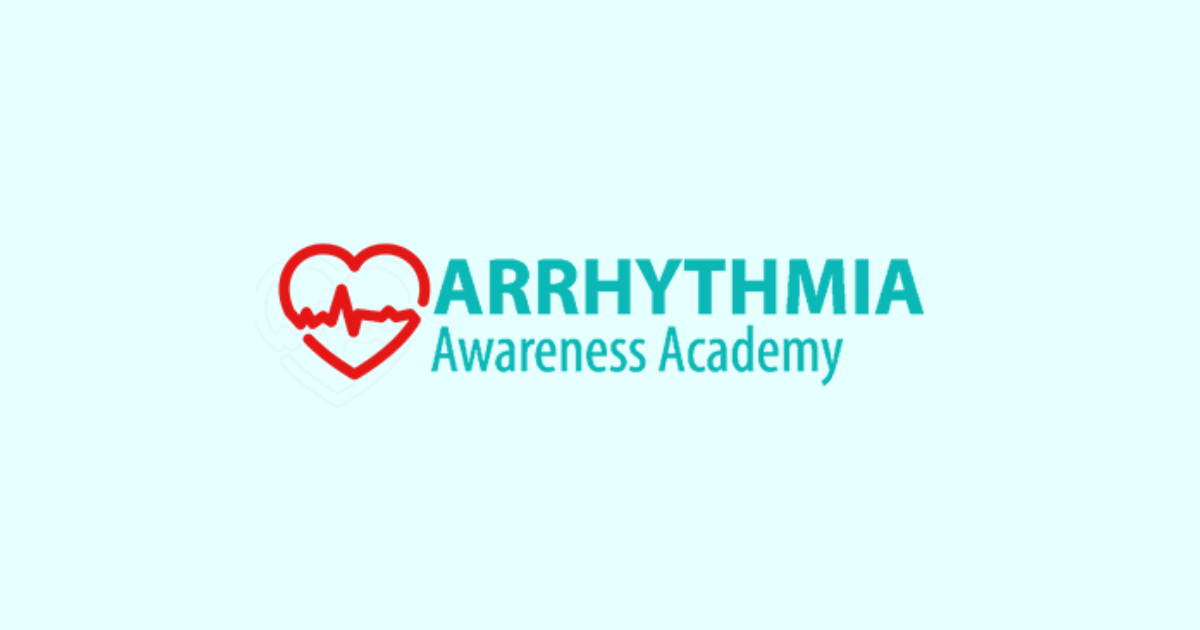- Single and dual chamber pacemaker post implant followup interrogations and troubleshooting
- AICD [defibrillator]and CRT[Bi ventricular pacing] device followup interrogations and trouble shooting
- Radiofrequency Catheter Ablation for Atrial Fibrillation and Post Myocardial Infarction Ventricular Tachycardias.
- Permanent pacemaker implantation [adult and children]
- AICD [Automatic Implantable Cardioverter Defibrillator] Implantation
- Biventricular Pacemaker [CRT] implantation for heart failure
- Insertable loop recorder implantation[ILR] for unexplained syncope
- Pacemaker and device explantation and reimplantation
- Pacemaker lead extraction
- Paediatric pacemaker and device implantations
- Elective Direct Current Cardioversion
Cardiac Resychronization
Some people with heart failure develop abnormal heartbeats, or arrhythmias. Some arrhythmias may reduce how well the heart’s lower chambers (ventricles) function. Cardiac Resynchronization Therapy (CRT), also known as biventricular pacing, may be needed. In this procedure, a special pacemaker is used to make the ventricles contract at the same time. This helps the lower heart chambers pump and relax together.
Read More
Permanent pacemakers
A pacemaker is a small battery-operated device that helps your heart beat in a regular rhythm. It does this with a small electric stimulation that helps your heart to beat regularly. Your doctor puts the pacemaker under the skin on your chest, just under your collarbone. It’s hooked up to your heart with tiny wires.
Read More
Implantable defibrillators
An Implantable Cardioverter Defibrillator (ICD) is a battery-powered device placed under your skin, beneath the collarbone, that monitors your heart rate. It uses batteries to send electric signals to a heart that’s beating too slow, same as a pacemaker. It can also deliver an electric shock to help restore a normal heartbeat to a heart that’s beating chaotically and much too fast.
Read More
Cardiac Resychronization and Implantable defibrillators
Some people with heart failure develop abnormal heartbeats, or arrhythmias. Some arrhythmias may reduce how well the heart’s lower chambers (ventricles) function. Cardiac Resynchronization Therapy (CRT), also known as biventricular pacing, may be needed. In this procedure, a special pacemaker is used to make the ventricles contract at the same time. This helps the lower heart chambers pump and relax together.
An Implantable Cardioverter Defibrillator (ICD) is a battery-powered device placed under your skin, beneath the collarbone, that monitors your heart rate. It uses batteries to send electric signals to a heart that’s beating too slow, same as a pacemaker. It can also deliver an electric shock to help restore a normal heartbeat to a heart that’s beating chaotically and much too fast.
Read More


